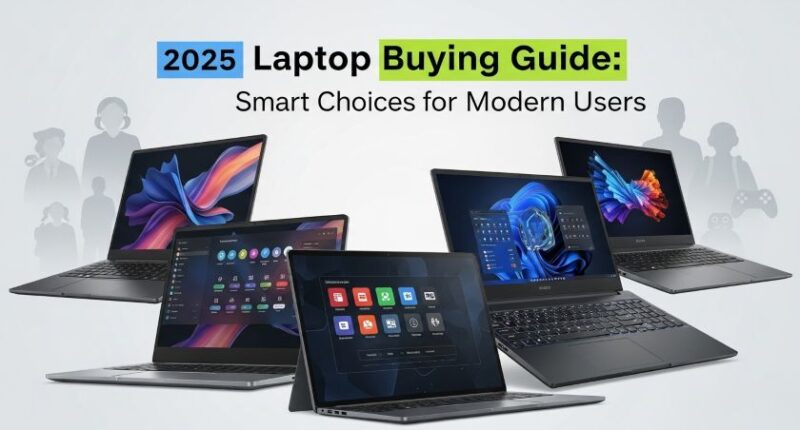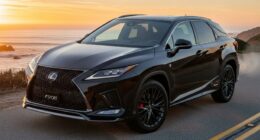Why 2025 Is a Game-Changing Year for Laptop Buyers
The laptop market in 2025 is evolving rapidly. This isn’t just about faster processors — it’s about smarter, longer-lasting machines. Analysts estimate the global laptop market will reach $273 billion by 2025, driven by hybrid work, remote learning, and AI-driven computing. (pcworld.com)
Manufacturers like Dell, ASUS, HP, Lenovo, and Apple are now competing on sustainability, performance efficiency, and modularity. Buyers need to think long-term: performance is important, but upgradeability, serviceability, and connectivity now define true value.
The Top Laptop Trends of 2025
Modular and Repair-Friendly Designs
The repairable and upgradeable laptop revolution is officially here. Framework, Dell, and HP are now offering laptops that allow users to swap RAM, SSDs, and ports with ease. These modular builds help reduce e-waste and extend product lifespan — a huge win for long-term users.
A laptop with accessible components might cost slightly more upfront, but it saves hundreds of dollars later in upgrades and repairs.
On-Device AI and NPU-Powered Chips
The shift toward AI-accelerated laptops is impossible to ignore. Intel’s new Core Ultra and AMD’s Ryzen AI processors include built-in NPUs (Neural Processing Units) for tasks like real-time image rendering, voice recognition, and background enhancement — all without the cloud.
This means faster performance, lower latency, and improved privacy. In short, your laptop will soon think and optimize tasks on its own.
OLED Displays and Lightweight Portability
The 2025 generation of laptops has redefined portability. OLED panels with 120 Hz refresh rates are now standard on mid-range and flagship models. You get richer colors, true blacks, and reduced eye strain — essential for designers, video editors, or binge-watchers.
Meanwhile, new magnesium-alloy builds and carbon-fiber composites have made it possible for 14-inch laptops to weigh as little as 2.2 lbs (1 kg) while maintaining premium performance.
Next-Gen Connectivity
Modern laptops now come standard with WiFi 7, Thunderbolt 4/USB 4, and Bluetooth 5.4. High-end models even offer 5G connectivity.
If your laptop lacks these features, you’re already behind. Choosing one with forward-looking ports ensures compatibility with future accessories and peripherals.
Sustainability and Longevity
Sustainability is finally profitable. Brands like Lenovo, Acer, and Apple are integrating recycled aluminum, bio-resins, and energy-efficient manufacturing into their 2025 lineups.
Beyond the eco-benefits, these materials also make for sturdier, cooler, and more elegant builds. A sustainable laptop isn’t just green — it’s durable and resale-friendly.
How to Choose the Right Laptop in 2025
Here’s a practical checklist to make a confident, future-proof purchase:
-
Performance vs Battery: Go for Intel Core Ultra or AMD Ryzen AI processors for balanced efficiency and power. Apple’s M3 series also offers superb battery life for Mac users.
-
Display: OLED or high-refresh IPS panels with 300 nits+ brightness and at least 100% sRGB coverage.
-
Weight: Under 3 lbs (1.4 kg) is ideal for travel.
-
Storage & Memory: 512 GB SSD minimum; 16 GB RAM or higher if multitasking heavily.
-
Ports & Connectivity: Must-have — USB-C (PD), Thunderbolt 4, WiFi 6E/7, HDMI, and Bluetooth 5+.
-
Cooling System: Vapor-chamber or dual-fan solutions are worth the investment for heavy users.
-
Upgradeability: Avoid fully soldered boards. Look for replaceable SSDs and expandable memory.
-
Service & Warranty: Pick brands with certified service centers and 2- to 3-year warranties.
-
Sustainability: ENERGY STAR 8.0 or EPEAT Gold certified devices often deliver better value long term.
Common Mistakes Buyers Make
-
Buying purely on specs instead of build quality.
-
Choosing locked-down laptops with no upgrade path.
-
Ignoring display quality and eye comfort.
-
Overlooking future-proof connectivity (WiFi 7, USB-C).
-
Ignoring local warranty or service support.
Avoid these traps, and your purchase will serve you well beyond 2026.
Top Recommended Laptops for 2025 (USD Prices)
| Model | Key Feature | Price (USD) | Ideal For |
|---|---|---|---|
| ASUS Zenbook 14 OLED (2025) | OLED display, Intel Core Ultra 7 | $1,099 | Creators / Professionals |
| HP Spectre x360 14 | Touch 2-in-1 design, 16 GB RAM | $1,299 | Productivity / Hybrid Work |
| Dell XPS 13 Plus (2025) | Premium build, WiFi 7 support | $1,399 | Business / Design Work |
| MacBook Air M3 (2025) | M3 chip, best battery life | $1,199 | Apple Ecosystem Users |
| Framework Laptop 16 | Fully modular, repair-friendly | $1,499 | Tech Enthusiasts / Developers |
| Acer Swift Go 14 OLED | Lightest 1.2 kg design | $899 | Students / Travelers |
| Lenovo Yoga Pro 7i | 120 Hz display, NVIDIA RTX graphics | $1,349 | Creators / Gamers |
Final Thoughts
Buying a laptop in 2025 means balancing power, intelligence, and sustainability. Focus on long-term reliability — not just the latest chip.
A great laptop today should last at least five years, deliver consistent performance, and remain compatible with future accessories.
Invest once, but invest smartly — and you’ll save both money and frustration down the road.









